Chris Baty's Blog, page 228
October 16, 2012
How to Teach the Young Writers Program: A Q&A with Linda Ulleseit
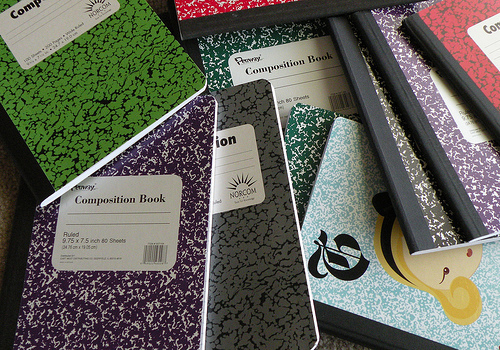
Linda Ulleseit knows all about the word ‘daring.’ For the last three years, she’s guided her fifth and sixth graders through the Young Writers Program. She taught these budding authors the joys of novel-writing, and led by example: she managed to publish her first novel, On a Wing and a Dare this year.
Amidst the chaos of the new school year, Linda shared tips for NaNoWriMo from her experience with publishing, bringing NaNoWriMo into the classroom, and facing her harshest critics: her fifth and sixth graders!
With NaNoWriMo fast approaching, do you have any advice to keep us from panicking about the 50,000 word count?
Goals are very important. I set my daily goals and treat them like laws. I had to make them, or die trying. Most mornings I got up at 5:00 a.m., which allowed me an hour to write. For the rest of the day, my head was full of my story, running plot scenarios. It was especially helpful on days I discussed plot development with my students, and I could share my own experience.
You’ve brought the Young Writers Program into your classroom for the past three years. For teachers interested in bringing the Young Writers Program into their own classroom, can you share your strategy for success?
October
At the beginning of October, we begin a fictional narrative unit. They are thrilled to move into a fictional realm! In mid-October we begin planning for NaNoWriMo by doing character sketches and roller coaster plot plans. The elementary workbook that NaNoWriMo provides is extremely kid-friendly and useful.
We also spend a lot of time planning goals. Our school district has Veteran’s Day off, and a day off for parent conferences. I tell the kids to plan to write a LOT on those days. We also have a week off for Thanksgiving, and they have to temper their writing plans with their holiday plans.
November
November is spent writing. My school is lucky in that we have a laptop cart to be shared among classrooms. I check out the cart for a full day at least five times during November. Students love to compose into the computer. Usually they have to write longhand first, then type it up. Creating as they type is new, and they love it.
They also love our NaNo Kickoff. Last year we gathered two schools, five classes, at the local public library. We had an entire room full of fourth, fifth, and sixth graders writing for well over an hour. Parents were astonished. Teachers were excited and proud. Students were inspired!
December
In December, students revise their work. They turn their novel in to me, on a flash drive, before they leave for Christmas break. I edit each story and compile them into an anthology.
We now have three very thick anthologies in the school library! Last year, my sixth graders’ stories averaged 20,000 words.
What’s the most inspiring experience you’ve had with your fifth and sixth graders?
The first year, they were shocked when I told them that they would be writing a novel. It was gratifying to see that change as the month wore on. I published an anthology of their work through Createspace, and the awe on their faces as they held their book was inspiring.
That year I had two students with special academic needs for which they were pulled from the classroom for instruction by a specialist. Writing was difficult for them, but they reluctantly agreed to set their goal at 1,000 words when I pointed out that a picture book was a thousand words and couldn’t they write a picture book? Both of them wrote over 2,000 words, dictating their story to me as I typed it into the computer. Their pride gave them lasting confidence.
A year later, one of them came into my new class to encourage them to work hard on their novels. Here was a boy who never had confidence in anything he could do, standing in front of a class of strangers and telling them how wonderful it was to write a novel! Moments like that still bring tears to my eyes.
NaNoWriMo is not just about writing. It is a bigger writing project than students have ever attempted, and when they achieve their goal they are exhausted and thrilled to their very toes.
How did NaNoWriMo help you to write On a Wing and a Dare?
Long before I’d ever heard of NaNoWriMo, I wrote a novel called Wings, Waves, and Wisteria. The reviewers in my online writing group weren’t satisfied with the world-building. They had lots of questions about the flying horses, the town that harbored them, and the role of women in the society. After thinking hard about their feedback, I realized a prequel was needed. Then I discovered NaNoWriMo.
On a Wing and a Dare was written as a prequel to my first novel, under the title Love, Lies, and Longing. I started planning it in October 2009 alongside my class. I did the character interviews and roller coaster plot plan, and I was as excited as they were come November 1! Throughout the month I was motivated by my ego—I was not going to let my fifth graders finish their novels and not finish mine!
Tell us about your revision and publication process.
Revision is always a nightmare. At least now I can say to my class, “I worked on my novel for two years, I don’t want any complaints when I ask you to revise your work!” I added, cut, polished, and reworked On a Wing and a Dare for six months. Reviewers online loved it, but one major part didn’t work. Originally, the story was set in modern-day California, in a small town in the Sierra Nevada foothills. No one bought the notion that a herd of flying horses could live there.
Finally, I admitted to this fatal flaw. Then a reviewer mentioned that the setting sounded like her grandmother’s farm in Wales. I loved tales of the mystical remote mountains of Wales, so I switched the setting to medieval Wales. After a great deal of research, I re-titled my novel On a Wing and a Dare, and for NaNoWriMo 2010 I rewrote the entire thing and set it in a different century and different continent. In December, I polished and cut.
In early 2011, I began to think about publishers. In spite of online doubters, I had sent Wings, Waves, and Wisteria out to publishers and agents. I accumulated 20 rejections, most without any advice. The big publishing houses and agents are inundated with submissions and I despaired being able to catch their attention. I decided to aim for smaller independent publisher with On a Wing and a Dare. Briona Glen was the first publisher I sent it to, and they snapped it up!
What have your fifth and sixth graders said about the novel?
Sixth graders can be brutally honest. While that is a good thing, since they are part of my target audience, it can also be hard to take. When a chapter is good, you can hear a pin drop in the room as every student stops breathing and no one wants to go to recess. That’s when I mutter, “Yessss!” under my breath.
Sometimes, though, they tell me a chapter is really boring or they don’t like a character. They get to be pretty good reviewers. One of them told me, “You can’t marry everyone off at the end. Something bad has to happen to someone to make it real.” That’s pretty real-world for a ten year old!
 For more about Linda’s books, check out:
For more about Linda’s books, check out:
Flying Horse Books
Her site here.
@LindaUlleseit
Do you have a plan for how you’re approaching your novel-planning this October?
— Andrea
Top photo by Flickr user KristinNador.
October 15, 2012
NaNoWriMo Professor Shares His Secrets for a Productive November
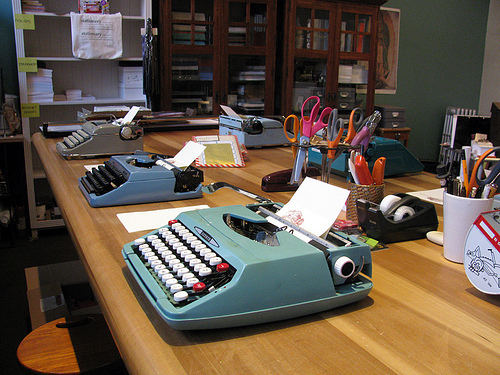
Ian Randall Wilson is an author, and professor at UCLA Extension. For those of you committed to winning this year (you can do it!), read on for his advice on how to reach the goal you’ve set:
NaNoWriMo is not far away and for the seventh year, I’ll be running a class at UCLA Extension called: Write a Novel in a Month as Part of National Novel Writing Month. People come with many different levels of experience. Some are working writers, others are graduates of MFA programs, many have never written much at all. They’ve been thinking about writing a novel for a long time but can’t get started. They’ve tried and never finished. They think they have nothing to write about. The common linkage is that this time, they’re going to succeed.
My success rate has been excellent: 84% finishing (while the international average completion rate for NaNoWriMo is around 19%). How does this happen? Why would anyone pay for a class to sit and write a novel?
We write in a pack to support each other; the sound of others writing spurs everyone on.
We write in a pack to encourage public success and prevent private failure.
We pay for the class because spending that money is a powerful motivator. (If you’re not paying for a class, then donating to NaNoWriMo is just as motivational).
We acknowledge the possibility of failure as a powerful motivator.
We know that success by finishing is a powerful motivator.
Having a “coach” (and “cheerleader”) provides support and reinforcement and motivation.
Having a set schedule is a powerful tool.
Keeping track of a daily word count is a powerful tool.
So here are a few tips to help you in your quest to complete this year’s NaNoWriMo challenge:
Register at NaNoWriMo and put in your word count every day and watch it rise.
Cut your TV-watching and internet-surfing. Change your Facebook status to “writing” and sign off. No Tweeting.
Tell a group of friends you’re undertaking the challenge. Email them your word count every day.
Better yet, enlist those friends to take the challenge with you. Exchange word counts by email every day. Cheer each other on.
No judgments. You aren’t writing the Great American Novel, you’re writing a first draft. Don’t worry about whether or not it’s any “good.” You’re in no position to decide. Keep writing. Write with a Zen mindset, putting down whatever word comes to mind without consideration of its value in a critical sense.
Write disruption. Disrupt the normal everyday life of a character. Write about the disruption and then write about the attempt to restore balance. These disruptions can be small: “My wife is mad at me because I was late.” Average: “I’ve lost my job, what now?” Or galactic: “The world is coming to an end in three days and only I can stop this calamity.”
Stuck? Try Description Exercise 1: Write 2,000 words about the room your character is in.
Stuck? Try Description Exercise 2: Write 2000 words about the house and the grounds of the house your character currently lives in (or lived in, or wishes they lived in).
Stuck? Become a journalist: What is in your character’s possession that can be described and listed? In your character’s desk drawer. A closet. A backpack. A car trunk. A garage. Write 2000 words.
Stuck? Become a journalist: Send your character to an event (party, family gathering, political rally, concert). Focus on what happens, who is there, what the place looks like in specific detail. Write 2000 words.
Go forward, do not go back. Tape over the backspace key for the entire month. Do not erase anything. Do not revise anything. Do not start again. During the month of November suspend all critical judgments.
I can tell you that the look of elation on the participants faces when they tell me they’ve finished the draft was amazing and priceless. These writers are now novelists. Ahead is the hard road of revision but that’s all part of the process. It’s that look on their face that keeps me going each year. Good luck, everyone.
What’s the best advice you’ve given or received about writing?
Ian Randall Wilson is the author of the novella, Great Things Are Coming and the short story collections, Absolute Knowledge: Stories and Hunger and Other Stories (Hollyridge Press). He teaches class in writing fiction at the UCLA Extension.
Find out more about Ian and his class:
On the UCLA Extension site.
On Facebook
At Hollyridge Press.
Photo by Flickr user donovanbeeson.
October 12, 2012
Why 'Winning' Isn't the Main Reason to Tackle NaNoWriMo
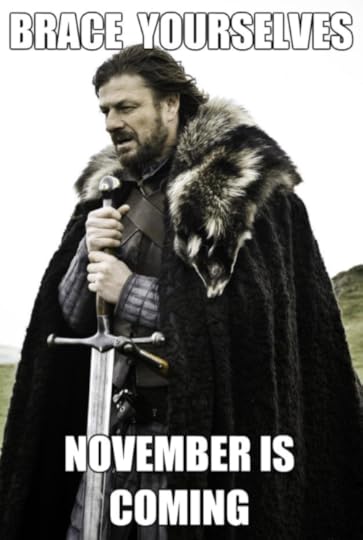
Would you believe that out of all the times I’ve participated in NaNoWriMo, I’ve never won once? I know I have a novel in me, but I’ve never had quite the stamina to make it to 50,000 words. Every October, I have new resolve. I say, “This year will be the year!”
And then around the middle of November, Derek Zoolander of the Center for Kids Who Can’t Read Good always seems to be leering over my shoulder, saying, “What is this! A novel for ants?” I watch my word count level out, failing to meet the new goal each day.
This blog entry is just to say, that’s totally okay! What I lose in volume, I gain in a handful of gems—bits of written work that the habitual editor in me actually appreciates. The most consistent advice I’ve ever received about writing is to do it all the time, and that can be a huge challenge. I have sent off drafts of stories to friends with email subject lines like: “Blarrgh! I’m done looking at this!” On the flip side, I’m intimate with that feeling of seeing everything fall into place; and the more I write, the more I learn to recognize that feeling, and the more I want to pursue it.
I was talking to an old classmate of mine recently. He told me about a talk he had with our former creative writing professor wherein she mentioned only one or two people from her senior class usually continue to write. One or two?! The statistic made me tick off names in my head as I became more determined to be one of those two, or maybe a miraculous third.
I know there are people out there who are not sure about whether to participate in NaNoWriMo this year. Whether they’ll have enough time to dedicate to it. Don’t sweat it. It’s actually the same inner-monologue I contend with every year. And I’ve actually seen a couple reblogs from us, where people were still debating it (yeah, dudes, we read the reblogs!). I’m not one to up-sell because I can tell when someone is up-selling to me, and it makes me very nervous and wary. But I did want to point out the value I get out of participating, even though I’ve yet to win.
Being a fairly non-competitive person, I tend to need some kind of intrinsic motivation when it comes to NaNo, and I think it’s awesome that for a month I get to become that person that eats, sleeps, and breathes a novel. Are you planning on doing NaNo this year, and if so, what’s your motivation to participate? Is it winning, or is it something else?
Seriously though, this year is the year.
— Ari
October 11, 2012
E-readers, iPads, and my love affair with plain old books.

I just finished a three-book series (you’ll never guess which) that I consumed entirely on an iPad.
I have never before read a book digitally. I’m a first-timer when it comes to e-readers, though I have dabbled in listening to books on tape. Audio books, while convenient for multi-tasking purposes, still felt lacking to me for all the reasons I have always loved reading good old-fashioned paper and ink books—the great musty smell, the heft of the pages, the way the whole book changes from crisp and untouched to worn and well-loved through the course of my enjoyment.
Reasons that have since been reinforced by my foray into iPad-reading.
Let me pause here and just say, I was bowled over by the ease and affordability of ordering books digitally. Talk about instant gratification! The late-night bookstore near my house was already closed, and I got my book anyway. For a compulsive reader such as myself, this was a huge revelation.
However, I realized very quickly that for the kind of reader I am, an iPad or other fancy (read: expensive to replace) e-reader simply won’t do. They demand a level of care and caution that a traditional book simply doesn’t require, unless it is a prized first edition or a borrowed copy (though I keep away from borrowing books for reasons that will become apparent).
When I read, that book is my companion and it goes with me everywhere, no matter what I am doing. Reading on an iPad or similar device makes this kind of constant, compulsive reading impractical and, frankly, reckless.
Reading while cooking has the obvious dangers of fire, water, and flying meat bits. Reading while falling asleep almost guarantees a face print on the screen (chamois please!). As this was a borrowed iPad, reading in the bathtub was strictly verboten.
So worried was I about the iPad, lest it slide to the floor or fall in a boiling vat of soup (or bath salts), that I found myself gripping it very firmly while I read. On an iPad, at least, the interface understands this firm grip as, “I’d like to turn the page, please, and fast!” This happened a lot. I’d be carefully (nervously) reading and suddenly I was inadvertently fast forwarding or rewinding pages by the dozens.
I longed for my cracked-spine paperbacks, to which a little marinara or drool only added a little character. And these beloved tomes, which have moved hither and thither from home to home, do not and will never require a power cord.
I know, crank crank crank. That’s me! While I sit up here on my antiquated old soapbox with my typewriter and turntable, I totally recognize that for fast readers like myself, digital readers are a travelers’ dream.
I am notorious for taking big heavy books on long trips with me. I took my new copy of Deathly Hallows to Africa. The guide looked at me like I was insane. (A book?! There’s a lion!) More recently, I lugged the signed 10th-anniversary edition of American Gods to Ireland. It’s a crazy thing to do, I know, defying all logic and norms of convenience and efficiency.
So, no more stacks of reading material incurring airline overage fees or—horror—getting forgotten in the seat-back pocket upon deplaning. No more getting stranded in a remote fishing village without any unread books or a brick and mortar store from which to buy more. I get that. And I may just use the e-reader for that very purpose, even if it does mean I have nowhere to stick my handy NaNoWriMo donor thank you bookmark, and I am constantly eye-twitching over how said device will meet its end.
But when I am home, stirring some dinner or passing out mid-sentence, I’ll happily be ruining a page of great-smelling, perfectly textured, delightfully absorbent paper.
What are your thoughts on the pros and cons of e-readers?
— Lindsey
October 10, 2012
The Inspiration Diaries: Sarah Ciston vs. Facebook/Tumblr/Twitter

We’re continuing our Inspiration Diaries as November approaches. Through the on-season, we’ll be asking Wrimos to share one inspiration-filled day, tracking every plot bunny, heart-thrill, and eye-opener for 24 hours that will help them to set the tone for their NaNoWriMo novels.
Read on to find out what’s inspiring Sarah Ciston, three-time NaNo winner, and book-design specialist.
Luckily for me, the work I do and the things I love majorly overlap. As a writer, editor, and graphic designer, every day at my job is different—but the inspiration’s always interdisciplinary. Here is a recent day:
9:?? a.m. What? I’m a freelancer. To rattle myself awake I reach for the nightstand book I’m five pages shy of finishing. In this case, it’s Alain de Botton’s On Love, a philosophical novel about relationships. I bought it on a whim, but it turns out the book is great research for a short story I’m writing. (Or is it an essay? I can never decide what my writing “is” until it’s done. Does anyone else have that problem?)
9:30 a.m. Book finished, I dog-ear a page to quote later and I grab two of my favorite things: coffee and the Internet. The unholy triumvirate of Facebook/Tumblr/Twitter is a lethal distraction from actually starting one’s day, and it’s a habit I’m trying to break.
On an ideal day I’d go for a walk or write morning pages first thing. Today I’m unsuccessful at habit-breaking but totally successful at inspiration. I open half a dozen new browser tabs for things I plan to read throughout the day (to go with the 20+ I didn’t read yesterday; it’s a flawed system, I admit). For example:
A beautiful fiction feature from one of my favorite literary magazines, Hobart.
An interview with poet Mary Ruefle about craft.
This awesome print of the entire text of Moby Dick. Book cover idea?
10:00 a.m. Never without a book to read, I start a new one over a quick breakfast: Antwerp, a prose-poetry novella by Roberto Bolaño, is also market research for my own novel (which I wrote during NaNoWriMo—heck yeah!).
11:30 a.m. Work is dragging a bit so I turn up some Metric and have a mini dance-party at my standing desk as I copyedit. This lyric reminds me of a scene I need to write for that short story:
No one here wants to fight me like you do. Combat, baby. Come back, baby. Fight off the lethargy. Don’t go quietly.
It’s a perfect description of dysfunctional relationships—at least, that’s what I hear.
1:02 p.m. Pinterest break! Actually it’s not a break at all. I use Pinterest for all kinds of inspiration, but I absolutely love how it helps with book design.
Each time I start a new cover for a client, I start a new Pinterest board to collect whatever catches my eye.Later, if I’m stumped for ideas, I can look at my board and identify oh-so-quickly what all the pins have in common. Sometimes Pinterest knows what I’m thinking before I do!
1:15 p.m. Venture out to the back yard with my laptop for some email and some sunshine. Logistical work is a necessary evil but at least the sky background is real and not just an image on my desktop. Fresh air inspires me to work faster.
1:17 p.m. I spot a great write-up that one of my authors got for her new book, which is going into a second printing. So proud! My clients inspire me every day with all the gumption it takes to publish and promote one’s own book. They remind me that the world needs stories, even and especially ones that don’t fit the mainstream idea of what a book should be.
2:30 p.m. It’s a Friday and I’ve met all my deadlines, so I decide to answer the siren call of the San Francisco Public Library’s Big Book Sale. What’s that you say? A truly massive warehouse full of steeply discounted books? Heaven. I snap a photo of a rare book cover for my Pinterest board and score 13 books for under $40. Now I have an overflowing nightstand’s worth of inspiration waiting in the wings, including a book I’ve been looking for by Sheila Heti, author of my most inspiring summer read, How Should a Person Be?
6:00 p.m. After 3+ hours of book hoarding, I’m tired and happy, but hungry. Luckily, a ton of food trucks are parked right outside thanks to Off the Grid. I grab vegetarian dumplings and a local IPA, and I chow down thinking about what I could learn from the entrepreneurial spirit and hands-on pluck these food trucks represent. That kind of artisanal business is a great way to take what you love directly to your audience.
Maybe I could run my book design studio out of a bookmobile? They say inspiration comes from the strangest places, and living in the Bay Area makes that a constant. Maybe it’s the beautiful sunset or the dumplings going to my head, but life is very good. I can’t believe I get to live here!
9:00 p.m. Join friends at a North Beach comedy club where our pal is performing stand-up. I’ve never seen comedy live before, but trying new things is the best way to get inspired—and so is showing my support for fellow creative types, no matter their field. Works every time.
12:?? a.m. Proceed home with a trunk full of books and a head full of ideas. I write a few lines of that pesky short story, close a few tabs on my Internet browser, and close my eyes.
Sarah Ciston runs Bootleg Books, an Oakland-based book editing and design studio that helps independent authors and publishers go rogue. She is managing editor of the small-batch literary zine We Still Like and a three-time NaNoWriMo winner.
Keep up with Sarah:
On her website
@BootlegBooks
At BootlegBooks.net
October 9, 2012
The ML's Guide to Writing in Los Angeles

Ah, the City of Angels. Home to celebrities known around the world such as Will Smith, Reese Witherspoon, and NaNoLA’s Lucky the Lemur. How could you not get starstruck by Lucky’s cute, cuddly, over-caffeinated presence? Sure, lemurs may not be native to Los Angeles, but it’s a region perfect for the out-of-place.
Put on those shades, because our LA Municipal Liaisons, Sara, Jennie, Chris and Xander are about to dazzle you with just how Hollywood tackles National Novel Writing Month. (And check out how NYC, Atlanta, the Philippines, and London take on the writing madness, too!)
The Los Angeles region rundown:
Best Local Writer Fuel — ”It’s not food or drink; I’d have to say it’s the other Wrimos themselves. Nothing gets me typing like the sound of other people typing. That, or a Starbucks Red Eye” — Chris
Other suggestions: Bananas from anywhere (S.M.), the caffeinated cookie that is the Starbucks Gingerbread Latte (J.V.), ”Freud claims pancakes but really anything flat and circular” (X.B.).
Best Way to Beat Writer’s Block — “Solar de Cahuenga, a cafe/restaurant in Hollywood has a very writerly feel to it. I hate that I don’t get there more often; if not to write, to people watch” — Xander
Other suggestions: Caltech’s haunted Morgan Library (S.M.), the “Mysterious Universe” podcast, especially if you’re writing sci-fi/horror/paranormal fiction (J.V.), anywhere in the early morning when, as a friend put it, “dreams are closer to the surface” (C.W.).
Regional Genre of Choice — “Historical fiction to steampunk chick lit to noir to flying monkey space operas.” — Sara
The Can’t Miss L.A. NaNo Event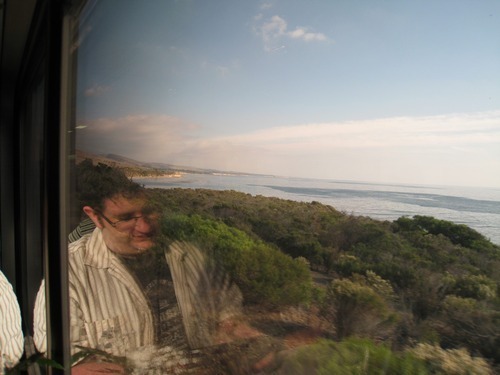
“The Great Train Escape! Ten hours of writing on a train from LA to Oakland. Beach views, wine, and a flying monkey named Bubbles. Sheer heaven—from the Smog to the Fog!” — Sara
“Hands down, the Great Train Escape. There is nothing like having a writing marathon on a train. And during those ten hours, you might be visited by a flying monkey bopping you on the head… or maybe that was just me.” — Jennie
The Runners-Up — ”There is a soft spot in my heart for the Thank God It’s Over parties. It’s a collective celebration of our crazy accomplishments. The month may be over, but we’ve all got new stories to share.” — Chris
“Just because it’s mine: Midnight Blast-Off. We find an all-night diner with outlets and parking, and write at the stroke of midnight of November 1. Oh, and it’s Halloween, and at the Hollywood IHOP.” — Xander
The Municipal Liaisons

(from L to R: Chris, Xander, Chris Baty, and Sara)
Chris (3rd year ML, 8th year Wrimo): A college friend mentioned NaNoWriMo in 2003. I checked out the website on awhim, and got hooked immediately (I blame Chris Baty). I wrote one post on the forum that year (“50K!” in a shoutout thread) before collapsing from exhaustion. A lot has changed since then.
Xander (2nd year ML, 3rd year Wrimo): I discovered NaNoWriMo from some blog I no longer follow. I had lots of time and needed something after graduating. The next year, after moving cross-country, I actually attended write-ins to meet people. Most of my friends are Wrimos because of this, so it only seemed natural to become an ML.
Sara (2nd year ML, 8th year Wrimo): Inspired by a friend who’d heard about a guy writing a novel in a month, I engaged the philosophy of embracing an insane goal and a ridiculous deadline in 2000. In order to become a scientist, I completed six years-worth of college in 2.5 years.
As of 2003, November is the month when molecular biology complements my earlier theater degree, and all manner of scientific craziness runs rampant in my novels.
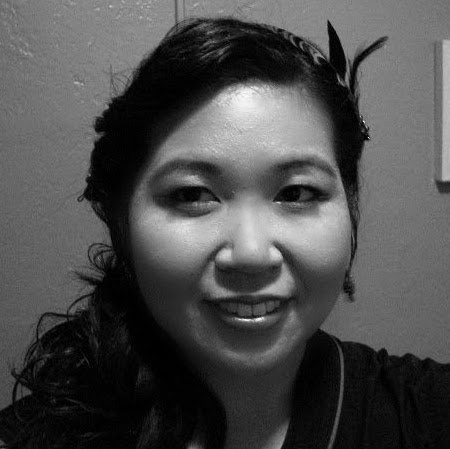 Jennie (1st year ML, 5th year Wrimo): This is my first year as an ML, but I’ve been hosting local write-ins for the last few years. I first saw NaNoWriMo being bandied about on Livejournal in 2006. In 2007, I finally signed up and promptly forgot about it after a week.
Jennie (1st year ML, 5th year Wrimo): This is my first year as an ML, but I’ve been hosting local write-ins for the last few years. I first saw NaNoWriMo being bandied about on Livejournal in 2006. In 2007, I finally signed up and promptly forgot about it after a week.
Despite my shameful start, I have won NaNoWriMo every year since 2007, and I hope to win many more!
A Guide to the Local Wrimos and Culture — ”I love meeting participants who tell me that they’ve never won NaNoWriMo; I tell them, ‘With me around, you’ll hit 50K.’ Every year, a bunch of these participants reach 50,000 before I do!” — Athena
“I learned that other people were doing this crazy novel-writing thing at my first Thank God It’s Over in 2003. One of my favorite things about NaNoWriMo is when I see people who start the season shyly showing up to write-ins, who end up talking to everybody at the TGIO. We writers can be an introverted group, so it’s great to see Wrimos come out and connect with each other.” — Chris
“For our mid-month party, everyone is encouraged to wear a silly hat. Then we take a group picture in the middle of Hollywood, with everyone staring at us, as we proudly wear our crazy hats and spell out NaNoWriMo. The tourists go nuts with their cameras. We feel like movie stars!” — Sara
The Region In a Nutshell — Fabulous City, Glamorous Writers.
“I made a joke about how we come out “mostly at night… mostly,” and keep laughing myself silly, but that’s just me and my late night write-in.” — Xander
Check out the region in November!
The NaNoWriMo Los Angeles forum
The website
@LANoWriMo
On Facebook
October 8, 2012
Pantser? Planner? Percolator?

One of my favorite NaNo terms is “pantser”—as in writing by the seat of your pants, without an outline.
The term brings up the age-old debate about how to best go about writing a novel: pantser vs. planner. I’m intrigued by people’s approaches to writing a novel because writers’ processes can seem as indelibly etched in their psyches as their genetic makeups. Some of us like clutter. Some of us need clean, organized spaces. Some of us live somewhere in between.
I like messy desks, stacks of books, coffee stains on papers, old jars full of pens, and random trinkets that others consider trash. So, yeah, you guessed it, I’m a pantser. I love digging into the messy, primeval goo of my story world’s materials and pulling out the raggedy knots of its skein (yes, a mixed metaphor, which I also like). I want to feel a grand and daring sense of exploration, and perhaps get lost in the meantime. Getting lost is actually part of the point.
But here’s the thing: being a pantser when writing a short story or a poem works fine, but a novel forces the question of process simply because so much time, toil, muscle, sweat, cups of coffee, melodramatic soundtracks, and broken pens go into it.
To dangerously double down on pantsing, plot is a weakness of mine. I write more toward mood and moments, as if a rising trajectory of action and character reversals aren’t a key part of good storytelling. If anyone could stand outlining a novel, especially one written in 30 days, it’s me.
These questions of process all arose during a random chat with Novel Planner Sarah Mackey. She sent me her blog posts on outlining—“The great debate: Are you a planner or a pantser?” and “Inside the mind of a planner”—and I confronted my approach. Per Sarah’s definition of being a planner, though, I realized I’m not the pure pantser I thought I was. I don’t wake up to a blank sheet of paper and dive in. It’s more like I’m a percolator. I let the drips of a story filter through my mind over a long period of time, letting it steam and swirl about without determining it.
It’s a process that sprung from the scarcity of time. Since I had children, I gave up the notion of a perfect, sustained time to write, so my writing process is squeezed awkwardly into the nooks and crannies of life. I always carry a Moleskine notebook in my hip pocket to write down the occasional stray thought, and truth be told, I often daydream my way through my children’s soccer games and write dialogue, character descriptions, and plot thoughts during the action (bad Dad!).
All of that qualifies as planning, as haphazard and unstructured as it might be, because I’ll type up all of my notes over the course of months—and even years in the case of my first NaNo novel—before trying to shape them into anything.
But outline? The word rings like a narrative death knell to me. When I’ve outlined stories, I feel like I’m writing in a jail cell, with no room to move. That wedge of sunlight coming in through the barred window just doesn’t open up the world enough for me. I like writing toward the expanses of mystery.
That said, I’ve pledged to adopt a more formal strategy this time around, to shake up my creative process if nothing else. That’s the reason I did NaNo in the first place: to whipsaw my creative approach just for the heck of it.
So here’s my plan: I’m going to do all of the exercises in Ready, Set, Novel! during October. I especially like its “Playground” section for the rambling, whimsical research avenues it provides (e.g. “Have your villain bust out her high school yearbook. Write some of the notes she finds in it.”). Then, to take a page from master planner Sarah Mackey’s book, I’m going to write 3-4 sentences of a chapter summary for each chapter.
As Sarah put it, “Each chapter gets three or so key scenes, and I’ll write a few sentences for each. This is the point in the outlining process where things sneak up on me. New characters appear fully formed on the page, plot twists seem to write themselves, and existing characters start making their own decisions. When this starts happening, I know the novel’s not just static on the page any more. Those moments are the best part of NaNo for me.”
But, like Sarah, I don’t want to know how the novel ends. Why write it in that case? I might very consciously leave the last third or so murky—so I can see where I’m going, but not necessarily how to get there.
The main thing is to keep experimenting. NaNoWriMo is a rollicking creative interruption in the dull routines of daily life—its very premise is a reminder to shake up the world.
Now, I want to hear about your approaches, and see if I can pick up another tip or two this time around. Rock my world.
October 5, 2012
Trip Planner: 30 Covers, 30 Days

30 Covers, 30 Days is back! As always, 30 lucky novelists will be chosen to have a cover designed for them. One novel, one cover, each day of November. But this time there’s a little bit of glorious news! For one thing, we’ve got two incredible new design powerhouses who will be coordinating the project this year:
 First we have NYC-based designer, writer, and radio show host Debbie Millman! Debbie will be handpicking a number of East Coast artists to create one-of-a-kind covers for our very own Wrimos, and we couldn’t be more thrilled to begin our design trip with her. Debbie is a polymath: she’s President of the design division at Sterling Brands, as well as of AIGA, the professional association for design. When not designing she’s writing: Debbie has authored five books, and writes for Print Magazine and Fastcompany.com. And when she’s not writing, she hosts the provocative and award-winning internet talk show, “Design Matters”.
First we have NYC-based designer, writer, and radio show host Debbie Millman! Debbie will be handpicking a number of East Coast artists to create one-of-a-kind covers for our very own Wrimos, and we couldn’t be more thrilled to begin our design trip with her. Debbie is a polymath: she’s President of the design division at Sterling Brands, as well as of AIGA, the professional association for design. When not designing she’s writing: Debbie has authored five books, and writes for Print Magazine and Fastcompany.com. And when she’s not writing, she hosts the provocative and award-winning internet talk show, “Design Matters”.
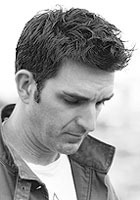 During the second half of November we will be meeting up with acclaimed designer Christopher Simmons, who will be showcasing a group of designers from his place on the West Coast! Based out of San Francisco, Christopher is also a writer (seeing a trend here?), having authored four books. In addition, he is an Adjunct Professor of design at the California College of the Arts, and the principle creative director and founder of the noted San Francisco design office, MINE. Christopher shares a passion with our Young Writers Program as an advocate for education; his most recent book, Just Design, examines how design is used to empower individuals, people, and social causes.
During the second half of November we will be meeting up with acclaimed designer Christopher Simmons, who will be showcasing a group of designers from his place on the West Coast! Based out of San Francisco, Christopher is also a writer (seeing a trend here?), having authored four books. In addition, he is an Adjunct Professor of design at the California College of the Arts, and the principle creative director and founder of the noted San Francisco design office, MINE. Christopher shares a passion with our Young Writers Program as an advocate for education; his most recent book, Just Design, examines how design is used to empower individuals, people, and social causes.
As a chronic Wrimo, I’m so excited to have two writers come into our fold for 30C30D, and as a graphic design junkie, I’m more than a little starstruck. Obviously I’m not done drooling over our John Gall-supervised covers from 2011, but I’m equally amped for this year.
The 30 Covers, 30 Days forum is as new and fresh as the Prince of Bel Air. Every year, I love looking for the thread where participants brainstorm just how exactly we select the synopses that get titles. I’ve already seen some good guesses, my favorite involving endless games of rock-paper-scissors. We can’t divulge such confidential information, of course, but let’s just say it involves a karaoke contest and plenty of interpretive dance.
If you’ve ever wanted to have your novel visually beautified by a group of talented designers, get your titles and synopses ready in the nomination thread! You might just be one of this year’s lucky 30!
– Ari
Photo by Flickr user etaymor
October 4, 2012
Student Novelists in Bangkok
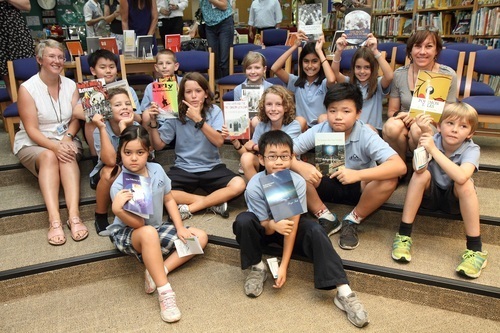
Selena Gallagher is an educator at the NIST International School in Bangkok, Thailand. NIST has around 1,500 students of over 50 nationalities, ranging in age from 3 to 18—and many of them are getting ready for a new year of NaNoWriMo! We asked her to tell us a little more about NaNo at NIST.
Last November, over 300,000 adults, children and teenagers from many parts of the world wrote novels, collectively writing around three billion words. They were joined by our school, which was participating for the first time. We had budding novelists from Year Five to Year Twelve, writing mostly in their own time, with individual word-count goals ranging from 2,500 to 30,000 words.
However, we are in Bangkok and NaNoWriMo coincided with some of the worst flooding Thailand has ever seen. Our school had to close in October which interfered with our preparation for NaNoWriMo and we weren’t even back at school on November 1st in time for the challenge to start. But the students rose to the occasion admirably, and the extended break allowed many of them to give their word counts a real boost.
I kept track of the students using the Virtual Classroom and we encouraged each other using the forums. One Year Five student demonstrated incredible dedication, achieving his original goal of 4,000 words in just three days! He immediately started on a sequel. By the end of November, the 13 elementary novelists had written a combined total of 74,709 words, with many exceeding their original goals by as much as 254%!
Juggling heavier workloads, nine participants from the secondary school still managed to write a combined total of 101,594 words during November, with five of them successfully meeting or exceeding their challenging word count targets. Some novelists even managed to persuade their parents to take part, too!
Despite our challenging start, NaNoWriMo was a phenomenal success, with many students surprising themselves with what they could do. Their class teachers have also seen the benefits spill over into improvements in their classroom writing, where they have been more confident and prolific.
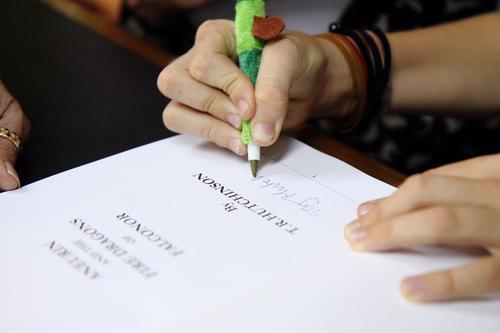
With twelve published authors in the school courtesy of last year’s NaNoWriMo, interest this year has been rising exponentially. I expect to have a lot more students sign up to participate and the excitement is already mounting. We’re planning some fun events to celebrate and support our budding novelists, including a “Write All Night” in the school library at the halfway point. We’re also encouraging some of our students this year to write their novels in a language other than English. I am anticipating some stiff Word War competition as the secondary students won’t want to be beaten two years in a row.
At the end of it, I’m looking forward to reading (and publishing through CreateSpace!) our imaginative, funny, touching, scary, amazing student novels.

The last word should go to some of last year’s student novelists:
NaNoWriMo has been an amazing experience for me. It taught me what it was like to be a real writer.
When I’m in NaNoWriMo I feel famous. Also it’s fun and it has strengthened my writing skills. I think whoever is in NaNoWriMo is lucky.
NaNoWriMo has been challenging but it is worth the time because it helps me get better at writing and literature. Sometimes it’s hard but most of the time it is fun because I get to control the story.
The whole idea of NaNoWriMo is to put your inner editor away and just write. And it’s great to be able to do something like this in only a month. It was a serious challenge especially with school to find the time and keep above that golden line on my NaNo stats. And it’s really fun to share your ideas with other young authors from all around the world. A real must for any young author.
I think NaNoWriMo is amazing because it helps me improve my imagination, typing and writing. I think opportunity will push me to do my best.
You can read another perspective on how NaNoWriMo YWP works in the classroom on the New York Times Learning Network, too!
October 3, 2012
YWP 2012: Calculated for Excellence

As nanowrimo.org enters its Blue Period with a refurbished face and new features, we’ve also been busy with development over at the Young Writers Program. Here are a few things we’re excited about on our relaunched 2012 site.
For the first time, we’ve introduced an interactive Word-Count Goal Calculator. Logged-in users can participate in a 10-minute freewrite, answer a couple of quick questions, and then get a recommendation for a unique, challenging-but-reachable target. We’re hoping it’ll be very helpful to the participants and educators of all ages that participate in the YWP.
Writers can now also customize their workbooks. The free, downloadable PDFs have text boxes for each exercise, so kids and teens can record all their character- and plot-planning in one convenient file.
Our pep talkers this year… well, we’re pretty proud of them. Legends like Lois Lowry, Kate DiCamillo, and Walter Dean Myers join awesome contemporary YA authors to create a perfect storm of noveling encouragement. We’ve also reorganized our pep archive so all that inspiration is in one accessible place.
Speaking of reorganization, we’ve created all-new Resources for Young Writers and Resources for Educators pages. We want our users to be able to easily find anything they need.
There are also several much-requested usability changes (editing novel and author info, adding users to Virtual Classrooms, etc.) that participants and educators will be sure to notice as they get ready for November.
And in non-site-related news, we’re shipping out free classroom kits and YWP merchandise at gazelle-like speeds.
In short, the Young Writers Program is ready for NaNoWriMo 2012. Are you?
— Chris
Chris Baty's Blog
- Chris Baty's profile
- 63 followers



